Meeting Tabby Cat
/ I have much neglected writing about my meeting with Billionaire Genius Tabby Cat. First off I should say that in person he is warm, worldly, charming, thoughtful, generous, agreeable, and a great conversationalist. I am truly delighted to make his acquaintance. We fully agree on 99% of everything! But as I’m sure my readers are aware the fiercest, most contentious arguments happen with people you very nearly agree with. That 1% of difference starts to seem like the key to everything. So I will take the liberty, in the interest of furthering the evolution of all human knowledge, and trusting that he will do the same for me, of making my case raw, without niceties.
I have much neglected writing about my meeting with Billionaire Genius Tabby Cat. First off I should say that in person he is warm, worldly, charming, thoughtful, generous, agreeable, and a great conversationalist. I am truly delighted to make his acquaintance. We fully agree on 99% of everything! But as I’m sure my readers are aware the fiercest, most contentious arguments happen with people you very nearly agree with. That 1% of difference starts to seem like the key to everything. So I will take the liberty, in the interest of furthering the evolution of all human knowledge, and trusting that he will do the same for me, of making my case raw, without niceties.It was 8:30 AM on a warm Thursday. After about 20 seconds of friendly posturing, we squared off for some fixed foot push hands. Seconds after contact I found my hand around the front of his neck, slowly and gently lifting him backwards. “We could do that,” he said and then proceeded to jump around like a feather weight boxer. “No, no,” I said, “I want to learn your game.”
 The base idea of Tabby Cat’s theory is that push hands is not a game, it is a single attribute training drill. The attribute it trains is so key to Tai Chi, that until you acquire this attribute, nothing else matters (except money and sex). Before we discuss what that attribute is, lets address the consequences of this type of view.
The base idea of Tabby Cat’s theory is that push hands is not a game, it is a single attribute training drill. The attribute it trains is so key to Tai Chi, that until you acquire this attribute, nothing else matters (except money and sex). Before we discuss what that attribute is, lets address the consequences of this type of view.Since historically speaking it is quite clear that the serious fun of martial arts developed in a social environment with theater, religious ritual, health ideas, and a wide range of prowess inspiring everyday problems, both social and asocial--the notion that a single attribute drill could be at the center of what defines Tai Chi is a profoundly Modern notion.
We tend to think of people like Yang Chengfu and his student, Zheng Man Qing, and his student, Ben Lo (Tabby’s teacher) as representatives of tradition. But Yang Chengfu most likely saw himself as a modernizer, and Zheng Man Qing even more so.
 The idea that a profuse, weirdly complex, theatrical fighting art like Chen style Tai Chi could be whittled down to just an attribute drill and a simplified 37 move form with, as Ben Lo put it, “Fair-ladies hands,” could only have come about as the result of a Dr. Spock-like inspired purging of all irrational impurities.
The idea that a profuse, weirdly complex, theatrical fighting art like Chen style Tai Chi could be whittled down to just an attribute drill and a simplified 37 move form with, as Ben Lo put it, “Fair-ladies hands,” could only have come about as the result of a Dr. Spock-like inspired purging of all irrational impurities.Now that’s not necessarily a bad thing. But it gets weird when all your students think you are the representative of a long and stable tradition. When in fact you represent only a small part of it. When in fact you were just playing around with language, trying to find words to describe your practice which were clear, simple and direct. The huge problem here is that words get stale. “Go with the flow,” was a great expression when it was first uttered, but now it is cracked and tasteless. The instruction, “Just relax,” has become as polysemous as “You’re so spiritual.”
So there we are in the park and I’m trying to understand what this single attribute is and how I can tweak the game of push hands in order to use it as a tool for acquiring this all important attribute. We cross hands again, this time I ignore the fact that Tabby is curving his chest inward making his head and neck vulnerable to any upward expanding movement. I let him lead me around and then suddenly he pushes me and I move my foot. I lose. We do it again, I lose again, and again. He says, “See, you’re really tense.” I reply, “Should I try to melt my tension when you push on me suddenly?” “Yes," he says. I try it, it doesn’t work. Then I push him without giving him a chance to lead me around. It works, I win. He says, “You can’t do it that way.” I’m confused, I say, “Your attacks are all straight forward and sudden. Can you do them slowly?” “Okay, he says.” When he attacks even a little bit slower, I have time to melt, and he has a much harder time getting me at all. His slower attacks sometimes reveal a connection to the ground and I win. But mostly I lose.
He clearly has a special attribute. The attribute is a wave, or surge that hits me before I feel his mass pushing me. But only just before, which is why he can’t do it slowly. If the wave could hit me a full second before his mass did, it would be way more impressive. The surge comes forward from belly height and seems to have influence all the way down to the feet. But it comes in the same way every time, so when it’s slow, or if I’m allowed to move my foot or if I attack any part of his body besides his belly or chest, the “attribute” doesn’t work.
I point this out and challenge him to do push hands flank to flank. He says, “The point of the drill is to acquire the attribute and then you can do anything you want with it.” “Okay,” I say, lets do it on the ground then. “Systema has drills like this, in every possible position and angle.” (Later I learn that he literally wrote the book on Systema!)
He doesn’t want to do it on the ground, so I offer, “I clearly see that you have acquired a valuable attribute, but for it to have any martial significance it would have to work in a surprise attack, in which you begin to fight from a terrible position. Can you do it if I’m grabbing you from behind?” I circle in slowly for the kill but he retreats to, “Ben Lo can do it from any position.” He describes a bunch of examples, but if I understand him correctly, Ben Lo is generally attacking fast.
I’m a little disappointed, I really want to be literally ‘blown away!’ I venture that what he is actually doing is leading me around until I make a mistake and reveal some structure or tension at which point he suddenly attacks. He agrees that he is basically doing this. I counter that it is quite divergent from fighting because in a fight, action trumps inaction. He asserts that it is an essential attribute drill which, once mastered, creates a quantum shift in movement and understanding.
I spend the rest of my time with Tabby in the park trying to do exactly what he is doing. I figure, I might as well try to learn as much as I can right there and then. His preferred position is one hand on my elbow and one hand reaching for my chest. I match this, as well as the inward curve of his chest. He says, “That’s a better position.” We push some more and then he treats me to a wonderful breakfast and an even better extended conversation on everything under the sun.
It’s been about three months since our meeting and I must say that in the process of deeply considering Tabby Cat’s ideas and developing my critic of them, I think I’ve improved a lot. I've been learning from both of our mistakes.
What was happening?
The idea of a single attribute drill is a brilliant Modern innovation. But shouldn’t there be some kind of limit on how long it takes a person to learn it? I mean at least with single attribute zazen, the practice of sitting still is the fruition, so there isn’t much pressure to prove you are enlightened. But with Tai Chi there is a reasonable expectation that at some point some serious ass kicking attributes will kick in. Really, if the single attribute takes more than ten years to acquire is it worth it? If it were only two years of training we were talking about I’d be like, “Yeah that’s the way to go. Attribute drills baby! Drill baby drill!”
But we are talking about less than a handful of Ben Lo’s students having acquired it over a period of 50 years. Yikes. Tabby mentioned that two students were super achievers, Terry Li (recently deceased) and Lenzie Williams. I have yet to meet them, but even if these guys are the cats meow, they are only two in how many 1000's of students?
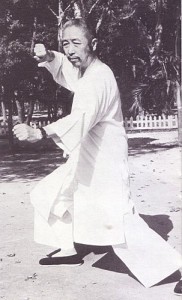 Zheng Man Qing promoted Tai Chi for health, entertainment, and the cultivation of wuwei generally, and that’s awesome wonderfulness. I’m right there with him. I am not promoting the idea that there is anything special about me or that learning Tai Chi will make us superheros or enlightened or even better people. Tai Chi is art, Tai Chi is beauty. I'm with anyone who recognizes that. But as promoters of beauty we have a duty to make plain our flaws, and to correct them.
Zheng Man Qing promoted Tai Chi for health, entertainment, and the cultivation of wuwei generally, and that’s awesome wonderfulness. I’m right there with him. I am not promoting the idea that there is anything special about me or that learning Tai Chi will make us superheros or enlightened or even better people. Tai Chi is art, Tai Chi is beauty. I'm with anyone who recognizes that. But as promoters of beauty we have a duty to make plain our flaws, and to correct them.The five training principles Tabby promotes are simply inadequate to communicate the internal aspects of the art. They are:
- Relax
- Body Upright
- Separate Weight
- Turn the waist
- Beautiful Lady's Hand
To illustrate this I will describe two problems Ben Lo has had teaching that I learned about talking with Tabby.
After years of teaching push hands, Ben Lo realized his students were getting worse. Students were simultaneously searching for tension in their opponent, when he found it, he would suddenly blast his opponent. This caused the loser to fear the sudden shock and develop chronic defensive tension. Meanwhile the winner was being rewarded for being more aggressive (more on why this is a problem below). Ben’s solution was to create a new game. He gave each partner a different role, one would only try to look for tension and the other would only try to evade it, after twenty minutes they would reverse. This resulted in improved yielding skills but it didn’t solve the problem. (The first time I pushed hands with a 5 year student of Ben Lo’s, I put my hand on top of his head and he yielded all the way to the ground! We were playing a completely different game.)
The second problem was that two types of students were coming to him, the jocks with “tense” full chests, and nerds with “collapsed” chests. Neither one was relaxed and he told them so, but after a while the “tense” students started to become collapsed too.
Here is what’s going on.
We have two bodies. An outer body, the thing with muscles that most people normally think of as a body, and an inner body. The inner body feels like empty space in the torso. I suspect that the inner body is more primitive in the evolutionary sense. Obviously this implies a composite body theory. The inner body is clumsy, very strong and innocent. It is somewhat like Freud’s Id. It has very simple primal desires. It lacks artifice, memory, and preferences.
Anyway, all normal human activity is a war between these two bodies.
The jock type of movement uses a tough outer body shape with a lifted chest in order to limit, direct, and constrain the inner body; however, the jock type uses the inner body for power. In the battle between the bodies the jock type of movement represents the inner body overpowering the outer body.
The nerd type of movement uses a collapsed but tense chest in order to de-power the arms by disconnecting them from the liquid mass of muscle. This is necessary for fine motor control. The nerd type of body has a strong collapsed chest and weak arms (the chest and arms have different liquid densities). In the nerd type of movement the inner body is sneaky and fairly quiet, but it can also manoever all around evading and repositioning to get to tricky angles. In the battle between the bodies the nerd type movement represents the outer body overpowering the inner.
What we actually want to cultivate in “internal arts” is each body doing a separate job, working together, but completely distilled from each other. So the outer body is dead, totally quiet and devoid of intent. The internal body is totally active and free. The internal body is moved indirectly by the spacial mind moving around in space. Once you have this conceptual framework it is easy to see Tabby Cat’s mistake.
Tabby Cat actually has a dead external body and a free internal body. That part he is doing correct, but he moves his internal body by keeping his mind in his belly. The more he can expand out from his belly in the direction of the ground and his opponent, the more effective his push is. The more his spacial mind extends down, the more force he has to float his opponent. To the extent that his spacial mind extends past his own hands into or beyond the opponent he can move the opponent without them feeling any structure in the attack. This is what we call internal power (neijing). Because his mind stays in his belly it is always pushing his mass, and given a moment to adjust to the unfelt attack, the secondary mass attack is easy to deflect. In fact, if the secondary attack is resisted and he presses it anyway, he will reveal a structure. And structure once revealed, can be crushed.
To use different language, he has huajing (transforming power), but he doesn’t know how to use it (not much ling--inner agility, intelligence). So when he goes to attack he sometimes uses huajing by accident but mostly retreats to anjing (hidden power). In the brief moment his mass is being pushed forward by his mind inside his dantian, he is exposing his jin, his structure and his root. This is why he can not attack slowly. This means that although he has reached the level where he can completely distill jing and qi in solo movement, he still mixes them under pressure.
What he should be doing is keeping his mind outside the body all the time. This will eliminate the initial need to lead the opponent around because the only way an opponent can go directly against outside the body force is if they have the same mind-outside-the-body skill set. His mistake is that he is leading his internal body in a direct way, when in fact he should be leading it in an indirect way.
The strongest indicator that this is Tabby’s problem is that even though it is on his list of 5 training principles above, he doesn’t have a clear upright posture. An upright posture comes from another related force called Central Equilibrium power (Zhongdingjin).
To practice Central Equilibrium power by oneself simply requires that one's liquid mass adjusts in relationship to the the center of liquid mass as any force goes out in any direction. It’s not very complex, but the outer body has to be dead-weight relaxed (xu) in order to do it. If the outer body is not dead-weight-relaxed, posture correcting muscles will be activated to bring the mass back on center, thus pitting the external body against the internal body in a battle. If central equilibrium is maintained exclusively by changes in the spacial mind, in Daoist terms, jing and qi remain distilled.
To apply Central Equilibrium power while fighting, the opponent’s mass must instantaneously be included in one’s liquid mass adjustment. When done correctly, the opponent’s incoming force is dispersed automatically and instantaneously by a continuously adjusting spacial mind. Thus, there is no advantage in evading by yielding the chest and neglecting uprightness.
In other words, yielding the chest is fundamentally an aggressive act because it is a set up for an outward attack (Lu into Ji in classic push hands terms). When we hit someone using Central Equilibrium power we never shoot out to a single point; as our mass spirals and expands to hit, it is moving equally in other directions. To use Wang Xiangzai’s language, “Power never comes out to a point, the body never breaks the qi egg.” Although the opponent gets clobbered, the body doesn't take on the experience of aggression. That's not much consolation for the injured party, but it's an interesting idea. No?
Tabby Cat has been doing a bit of writing lately and I recommend reading it.
I learned a lot from the exchange, and I have more to write about still. I'm still open to the idea of a single attribute drill that would eliminate a lot of wasted time. But in this case I would have to say it failed. There is so much detail to the internal martial arts that putting off learning it in hopes of some holy grail of power ultimately means never learning that detail at all. And Tabby is the case that proves the point, he studied Systema in hopes that it would fill in the gaps, and in the end he has retreated to Western Boxing and Yoga to supplement his Tai Chi. In this case, I think, even Modernity has failed.


 Both have fixed foot positions. The one top goes up and down. The one on the bottom goes forward and backward. They are both designed to take all arm and leg power out of the system as well as any size advantages or gravity/momentum/positioning advantages-- Thus leaving only "internal" mind-energy changes of the torso for generating force. What the practice reveals is all the possible things you could do that are wrong. This is really important because all those "wrong things," like tension in the shoulders, might seem like they are giving an advantage in a more dynamic or volatile exercise.
Both have fixed foot positions. The one top goes up and down. The one on the bottom goes forward and backward. They are both designed to take all arm and leg power out of the system as well as any size advantages or gravity/momentum/positioning advantages-- Thus leaving only "internal" mind-energy changes of the torso for generating force. What the practice reveals is all the possible things you could do that are wrong. This is really important because all those "wrong things," like tension in the shoulders, might seem like they are giving an advantage in a more dynamic or volatile exercise. The most basic, primal, reduction of the notion of self-defense is the protection of a baby in the womb. It totally trumps castle law and threats to life and limb. If a pregnant woman rips out a man’s throat, or shoots or stabs him, all she has to claim is she was protecting her baby. As long as she can plausibly make that claim, no jury in any civilized country would convict her. Even a child would at least have to make the case that running away was a bad option, or that lethal force was justified, but a pregnant woman unaided and under attack can get away with almost anything.
The most basic, primal, reduction of the notion of self-defense is the protection of a baby in the womb. It totally trumps castle law and threats to life and limb. If a pregnant woman rips out a man’s throat, or shoots or stabs him, all she has to claim is she was protecting her baby. As long as she can plausibly make that claim, no jury in any civilized country would convict her. Even a child would at least have to make the case that running away was a bad option, or that lethal force was justified, but a pregnant woman unaided and under attack can get away with almost anything.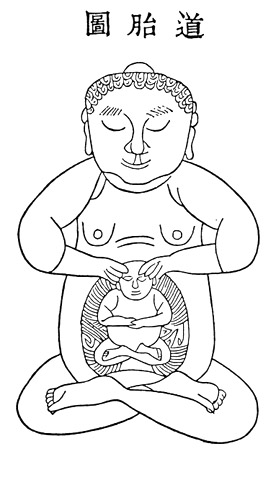 A woman who is pregnant is doing this all the time. So in the event that she needed to fight, it seems possible that she would maintain this attitude or at least be physically informed by it. Think for a moment though, how such a fighting style would look.
A woman who is pregnant is doing this all the time. So in the event that she needed to fight, it seems possible that she would maintain this attitude or at least be physically informed by it. Think for a moment though, how such a fighting style would look.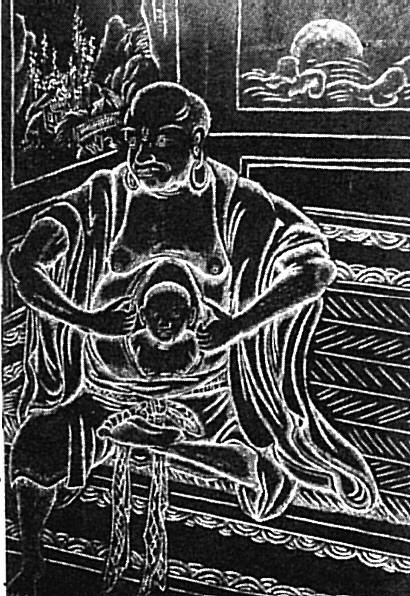 This appears to be a very obvious, though over looked, explanation of why Daoists have so often used the metaphor of making an immortal baby to describe the internal elixir practices of neidan, and jindan.
This appears to be a very obvious, though over looked, explanation of why Daoists have so often used the metaphor of making an immortal baby to describe the internal elixir practices of neidan, and jindan.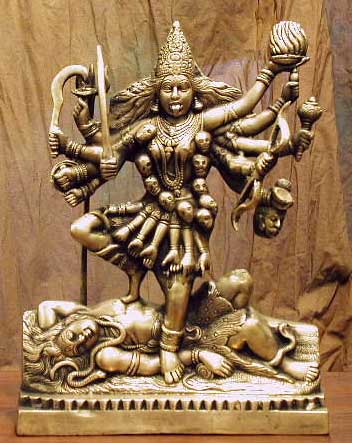 Which brings us to othering. Othering is the psyco-physical process of dehumanizing an individual or a group of people so that you can kill them without feeling social restraint or remorse. Othering is shorthand for: “Seeing someone as belonging to another species.” Butchering animals may be totally natural on a farm, or while hunting, or it may need some training. Certainly us urban people need to get past our squeamishness in order to butcher an animal. After I caught, gilled, cleaned and iced 128 King Salmon in one day in Alaska I was haunted by fish eyes whenever I looked closely at anything shiny. But other than that, I had successfully othered them.
Which brings us to othering. Othering is the psyco-physical process of dehumanizing an individual or a group of people so that you can kill them without feeling social restraint or remorse. Othering is shorthand for: “Seeing someone as belonging to another species.” Butchering animals may be totally natural on a farm, or while hunting, or it may need some training. Certainly us urban people need to get past our squeamishness in order to butcher an animal. After I caught, gilled, cleaned and iced 128 King Salmon in one day in Alaska I was haunted by fish eyes whenever I looked closely at anything shiny. But other than that, I had successfully othered them.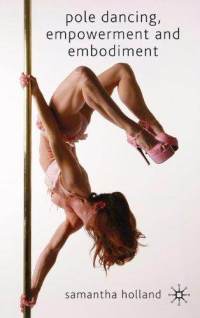 Understanding the nature of perception is profoundly important for the study of any movement art. The martial arts have been particularly vulnerable to the modern dictum that, "what you see is what you get." But perception just ain't that simple.
Understanding the nature of perception is profoundly important for the study of any movement art. The martial arts have been particularly vulnerable to the modern dictum that, "what you see is what you get." But perception just ain't that simple.
 Theater ritual and martial arts are closely intertwined. Masks have been used since ancient times to create altered states of consciousness. If you want to know what it is like to experience the tunnel vision associated with being attacked, just put on a mask with narrow eye slits. Mask work done with tradition and sensitivity has the ability to profoundly change the way we move and see. It can change the way we feel and perceive both space and time. Most traditional
Theater ritual and martial arts are closely intertwined. Masks have been used since ancient times to create altered states of consciousness. If you want to know what it is like to experience the tunnel vision associated with being attacked, just put on a mask with narrow eye slits. Mask work done with tradition and sensitivity has the ability to profoundly change the way we move and see. It can change the way we feel and perceive both space and time. Most traditional  Everyone is familiar with the idea of social stress. Social stress happens whenever there is any challenge to a person's preferred status. There have been a lot of rat studies about social stress (their hair tends to fall out). There have also been a few studies of British civil servants (their hair falls out too). Generally the lower you are in the social hierarchy the more stress. That's probably because the lower you go in a hierarchy, the more people their are competing. Positions at the top of social hierarchies are generally less stressful, but that depends on how real the challenges are and how often they are coming--the opposite could be true.
Everyone is familiar with the idea of social stress. Social stress happens whenever there is any challenge to a person's preferred status. There have been a lot of rat studies about social stress (their hair tends to fall out). There have also been a few studies of British civil servants (their hair falls out too). Generally the lower you are in the social hierarchy the more stress. That's probably because the lower you go in a hierarchy, the more people their are competing. Positions at the top of social hierarchies are generally less stressful, but that depends on how real the challenges are and how often they are coming--the opposite could be true.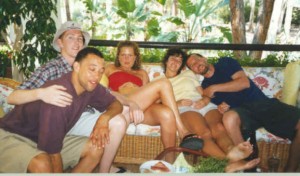 Our experience of social dynamics is largely unconscious. Experiences with improvisational theater, intense conflict, or other dramatic breaks from normal behavior can lift the veil off of social dynamics. Suddenly you just 'wake up' and notice that every word, glance, sound, or movement is changing peoples status before your eyes. Most people are status specialists, one person fights to be dominant, another looks around for a strong person to be number two to, others show their top row of teeth and nod "yes" a lot-- they are happy subordinates. There are infinite degrees of social status and it can change in the blink of an eye, or rather, it always changes in the blink of an eye. Most people have a preferred status but status is constantly in flux, changes happen in quantum leaps. Good teachers are masters of changing from low to high status in a flash, one moment the students find themselves cheerfully interacting with each other, helpful, and cooperative, the next moment they are frozen listening to the teacher's instructions with bated breath.
Our experience of social dynamics is largely unconscious. Experiences with improvisational theater, intense conflict, or other dramatic breaks from normal behavior can lift the veil off of social dynamics. Suddenly you just 'wake up' and notice that every word, glance, sound, or movement is changing peoples status before your eyes. Most people are status specialists, one person fights to be dominant, another looks around for a strong person to be number two to, others show their top row of teeth and nod "yes" a lot-- they are happy subordinates. There are infinite degrees of social status and it can change in the blink of an eye, or rather, it always changes in the blink of an eye. Most people have a preferred status but status is constantly in flux, changes happen in quantum leaps. Good teachers are masters of changing from low to high status in a flash, one moment the students find themselves cheerfully interacting with each other, helpful, and cooperative, the next moment they are frozen listening to the teacher's instructions with bated breath.
 Below is the text of the flyer for George Xu's latest public offerings in San Francisco. It's poetry, of a sort. The first time I met George was around 1990. My first teacher, Bing Gong was making a formal introduction on my behalf. George was briefly delighted and then went into a wild rant about how everyone was doing Tofu Tai Chi. He proceeded to define and contrast Tofu Tai Chi with the other cosmological possibilities and then began demonstrating maximum spring shaking power as the antidote to all this squishy food practice. I was hooked.
Below is the text of the flyer for George Xu's latest public offerings in San Francisco. It's poetry, of a sort. The first time I met George was around 1990. My first teacher, Bing Gong was making a formal introduction on my behalf. George was briefly delighted and then went into a wild rant about how everyone was doing Tofu Tai Chi. He proceeded to define and contrast Tofu Tai Chi with the other cosmological possibilities and then began demonstrating maximum spring shaking power as the antidote to all this squishy food practice. I was hooked. 

 It is a staple of Chinese movement and religious studies that the tongue should be on the roof of the mouth. In Daoist ritual and ritual meditation the tip of the tongue is sometimes used to draw talisman on the roof of the mouth. But in Zouwang (sitting and forgetting) the basic emptiness meditation practice, which is very much like Zen, part of the posture instructions for stillness include putting the tip of the tongue on the roof of the mouth behind the teeth. I’ve also heard people say to put the tongue on the soft pallet. The identical instruction is standard in Tai Chi and other internal martial arts and qigong classes.
It is a staple of Chinese movement and religious studies that the tongue should be on the roof of the mouth. In Daoist ritual and ritual meditation the tip of the tongue is sometimes used to draw talisman on the roof of the mouth. But in Zouwang (sitting and forgetting) the basic emptiness meditation practice, which is very much like Zen, part of the posture instructions for stillness include putting the tip of the tongue on the roof of the mouth behind the teeth. I’ve also heard people say to put the tongue on the soft pallet. The identical instruction is standard in Tai Chi and other internal martial arts and qigong classes.